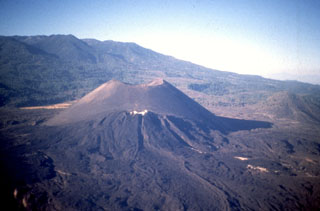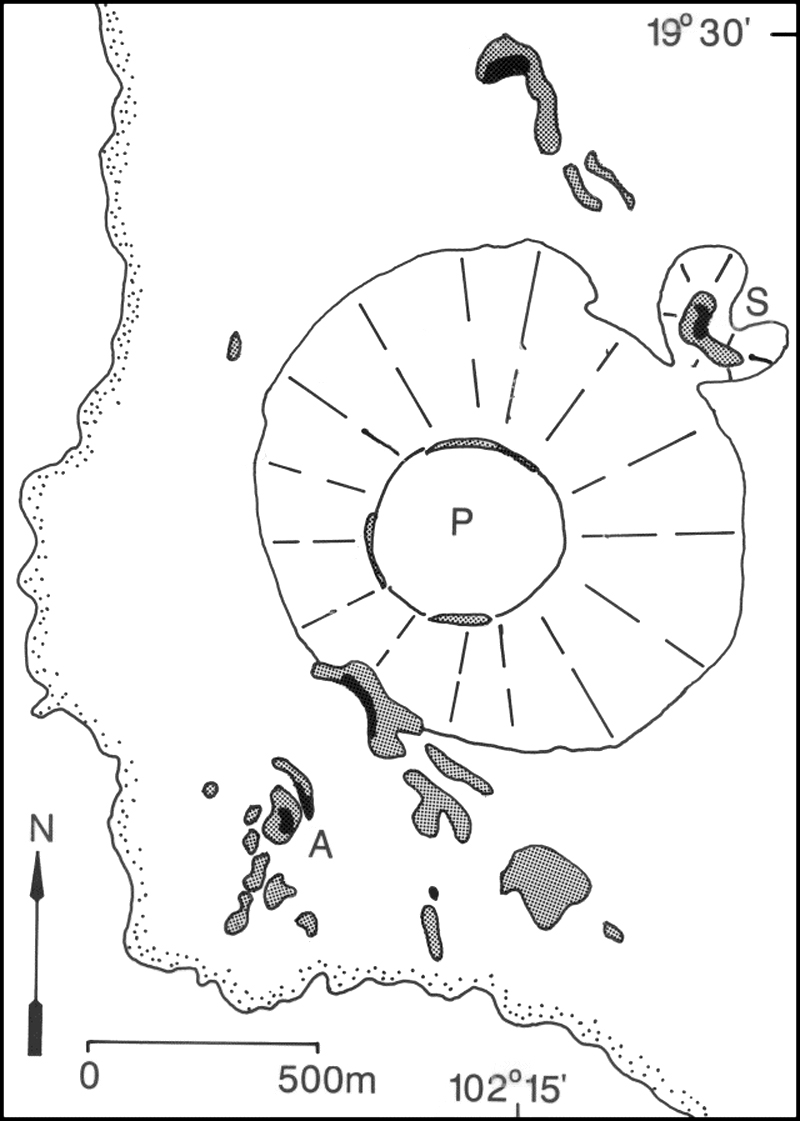Report on Michoacan-Guanajuato (Mexico) — May 1988
Scientific Event Alert Network Bulletin, vol. 13, no. 5 (May 1988)
Managing Editor: Lindsay McClelland.
Michoacan-Guanajuato (Mexico) Fumarole temperatures decline
Please cite this report as:
Global Volcanism Program, 1988. Report on Michoacan-Guanajuato (Mexico) (McClelland, L., ed.). Scientific Event Alert Network Bulletin, 13:5. Smithsonian Institution. https://doi.org/10.5479/si.GVP.SEAN198805-341060
Michoacan-Guanajuato
Mexico
19.85°N, 101.75°W; summit elev. 3860 m
All times are local (unless otherwise noted)
Geologists mapped fumaroles and measured temperatures on 8 and 16 May. As in previous years, fumaroles were hottest at Ahuan vent (figure 1) but had cooled to 336°C, from 473° in November 1985 and 375° in November 1986. The area seemed morphologically unchanged since April 1983. Fumaroles at Sapichu vent ranged from 186° to 275°C, an increase of as much as 120° since they were last measured in April 1983. Sulfur continued to be deposited around the Sapichu fumaroles. All other fumaroles at Parícutin had temperatures of
Geological Summary. The widespread Michoacán-Guanajuato volcanic field contains over 1,400 vents, including the historically active cinder cones of Parícutin and Jorullo, covering a 200 x 250 km wide area of Michoacán and Guanajuato states in west-central México. Cinder cones are the predominant volcanic form, but small shield volcanoes, lava domes, maars and tuff rings (many in the Valle de Santiago area), and coneless lava flows are also present. The volcanoes with shield-type morphologies are mostly Pleistocene in age, although the Michoacán-Guanajuato centers have higher slope angles and smaller basal diameters. Jorullo, which was constructed in the 18th century, and Parícutin, which grew above a former cornfield during 1943-52, are the two best known volcanic features scattered throughout the field.
Information Contacts: C. Connor, James Diaz, and Jorge Corrales, FIU, Miami; Ana Lillian Martin-Del Pozzo, Instituto de Geofísica, UNAM, México.


